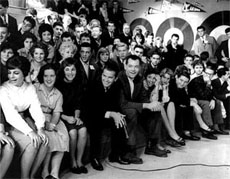The Beat Generation – The Rebellious Roots of Counterculture
Before there were hippies, before Woodstock and tie-dye, there were the Beats. The Beat Generation was the first real breakaway movement of the postwar era—a group of writers, thinkers, and musicians in the 1950s who pushed back hard against the polite, buttoned-down norms of American life.
They weren’t looking for fame or fortune (though a few found both). What they really wanted was truth. Raw, unfiltered, and often uncomfortable truth—told through poetry, novels, music, and life on the road.
Postwar Blues
The Beat Generation didn’t just appear out of thin air. It was a reaction to the cultural conformity and political fear that took hold in America after World War II. By the early 1950s, the U.S. was booming economically—families moved to the suburbs, TV sets filled every living room, and dinner at 6:00 was the norm.
But not everyone was happy in that tidy world. A younger generation felt restless and boxed in. They were “beaten down” by society’s expectations. Out of that frustration came a new voice—one that would change American culture forever.
The Big Three: Kerouac, Ginsberg, and Burroughs
At the center of the movement were three writers who became household names (or at least dorm room posters):
- Jack Kerouac, the author of On the Road, captured the spirit of freedom and spontaneity in a stream-of-consciousness style that became his trademark. He was the road warrior of the Beats, always searching for meaning in motion.
- Allen Ginsberg shocked the literary world with his poem Howl—a raw, emotional outcry about mental illness, sexuality, war, and the soulless grind of modern life. It was banned for obscenity… which, of course, made it a must-read.
- William S. Burroughs took readers deep into the world of drugs, crime, and inner demons in Naked Lunch. It was dark, disturbing, and unforgettable—exactly what he was going for.
These three weren’t just writing books—they were creating a new kind of American voice, one that rejected the polished, idealized view of the 1950s and told the world what it was really like to feel out of place.
Coffeehouses and Bongo Drums
The Beats gravitated toward places like Greenwich Village in New York and North Beach in San Francisco. In smoky coffeehouses and basement clubs, they read poetry, played jazz, and talked philosophy long into the night.
Beats didn’t dress like the crowd either. The men favored goatees, turtlenecks, and berets, while women often wore black tights, long hair, and thrift-store chic. They were the first real counterculture look, a full decade before the hippies picked it up and ran with it.
Breaking the Rules
The Beats weren’t afraid to tackle taboo topics. In fact, they made it their mission.
They wrote openly about homosexuality, drug use, spirituality, and sex—subjects that were off-limits in most of polite society. Ginsberg, in particular, wrote about his own sexual identity at a time when being gay could get you arrested.
The Beats also embraced Eastern religions, especially Zen Buddhism, as a way to find peace and meaning outside of organized Western faiths. Many considered themselves spiritual seekers, not religious rebels, but they often ended up being both.
The Beatniks and the Media Makeover
As their influence spread, the media began turning the Beat Generation into a cartoonish image: the Beatnik. Suddenly, ads and TV shows were full of beret-wearing hipsters snapping their fingers and talking in jazz slang.
The real Beats didn’t much care for the caricature. But the publicity helped spread their ideas—and their music. Jazz, especially bebop, became the soundtrack of the Beat era, with artists like Charlie Parker, Dizzy Gillespie, and Thelonious Monk providing the rhythm.
From Beats to Hippies
The Beat Generation didn’t last long, at least not as a formal movement. By the early 1960s, many of the original figures had either moved on or faded into legend. But their ideas lived on.
The hippie movement, the antiwar protests, and the free speech movement of the 1960s all grew from Beat roots. So did rock music’s more thoughtful, poetic side—Bob Dylan, The Beatles, and even The Doors all owed a creative debt to the Beats.
Final Thoughts
The Beats questioned everything—government, religion, sexuality, art, even the structure of a sentence. They pushed boundaries and made a lot of people uncomfortable. But they also opened the door to free expression, cultural exploration, and the right to be different.
And that’s why they still matter today.
As Jack Kerouac wrote:
“The only people for me are the mad ones… the ones who never yawn or say a commonplace thing, but burn, burn, burn like fabulous yellow roman candles.”














